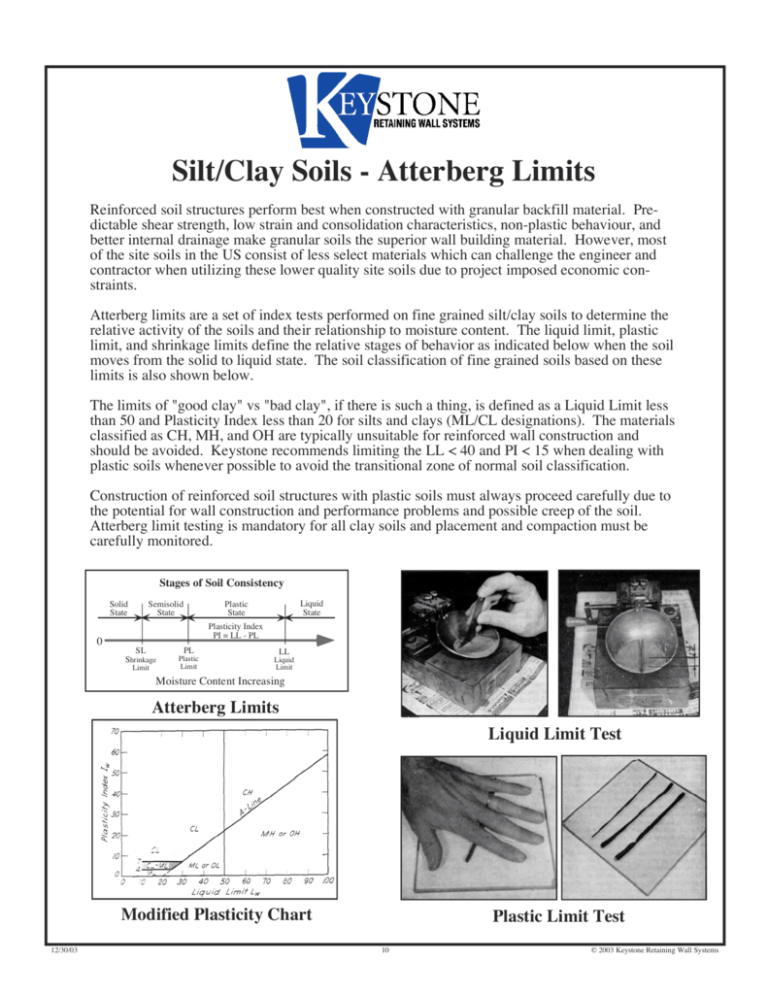
The amount of expansion is related to the ability of the soil to take in water and its structural make-up (the type of minerals present: clay, silt, or sand).

Soils when wet retain water, and some expand in volume ( smectite clay). They were later refined by Arthur Casagrande, an Austrian-born American geotechnical engineer and a close collaborator of Karl Terzaghi (both pioneers of soil mechanics).ĭistinctions in soils are used in assessing soil which is to have a structure built on them. These limits were created by Albert Atterberg, a Swedish chemist and agronomist, in 1911. The water content at which soil changes from one state to the other is known as consistency limits, or Atterberg's limit. The Atterberg limits can be used to distinguish between silt and clay and to distinguish between different types of silts and clays. Thus, the boundary between each state can be defined based on a change in the soil's behavior.

In each state, the consistency and behavior of soil are different, and consequently so are its engineering properties. The Atterberg limits are a basic measure of the critical water contents of a fine-grained soil: its shrinkage limit, plastic limit, and liquid limit.ĭepending on its water content, soil may appear in one of four states: solid, semi-solid, plastic and liquid. Geotechnical characteristics of a soil related to its water content


 0 kommentar(er)
0 kommentar(er)
